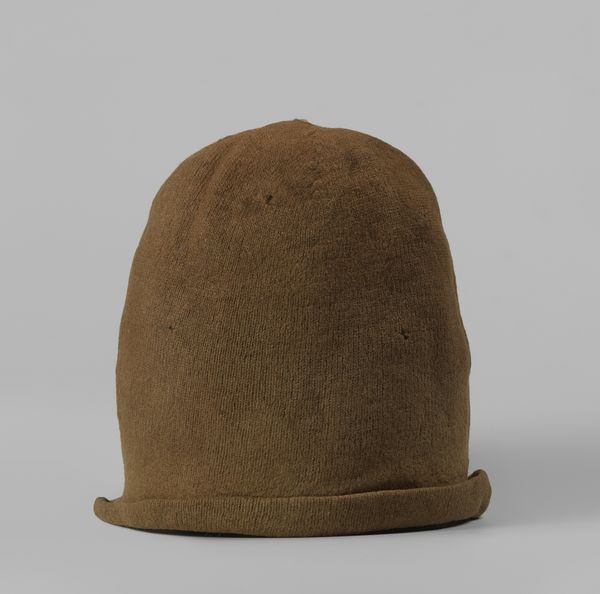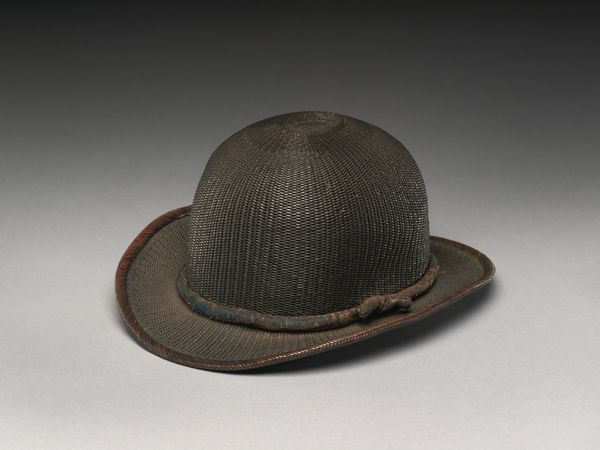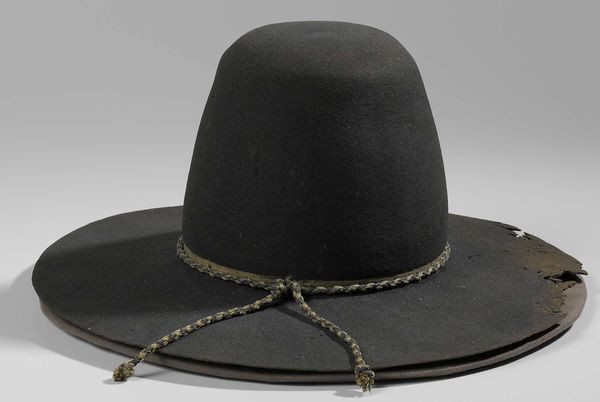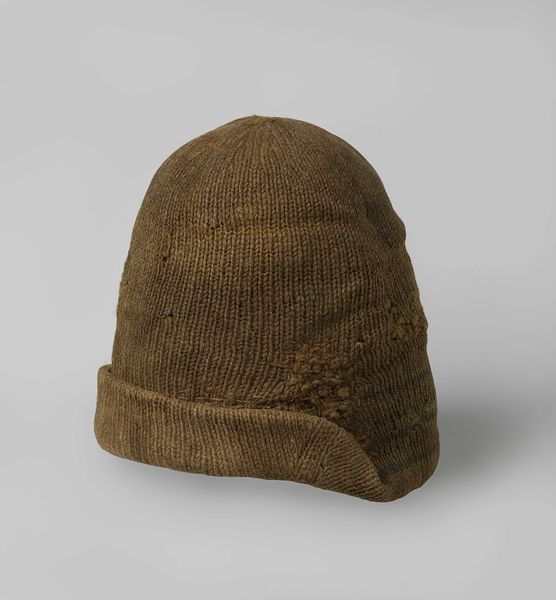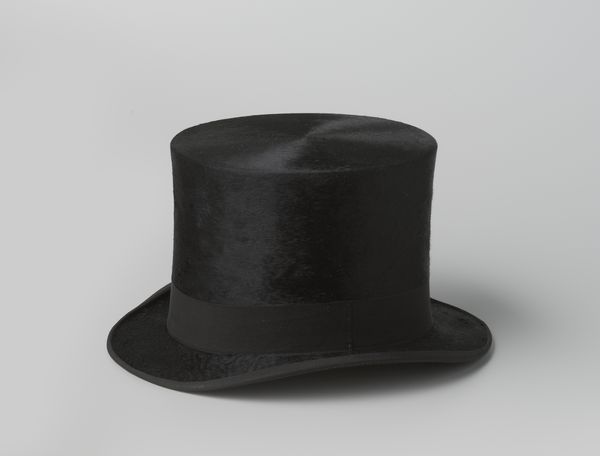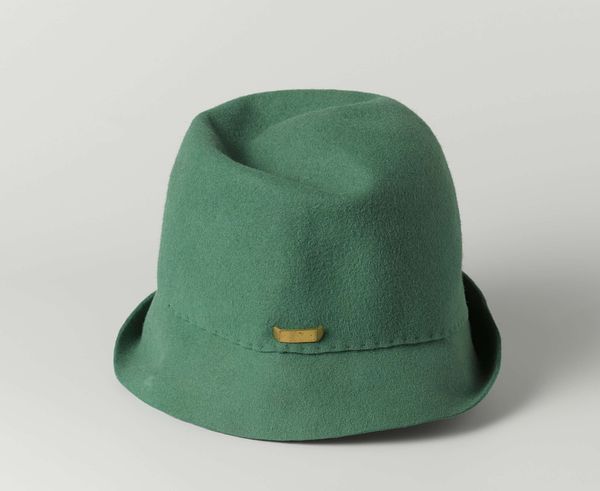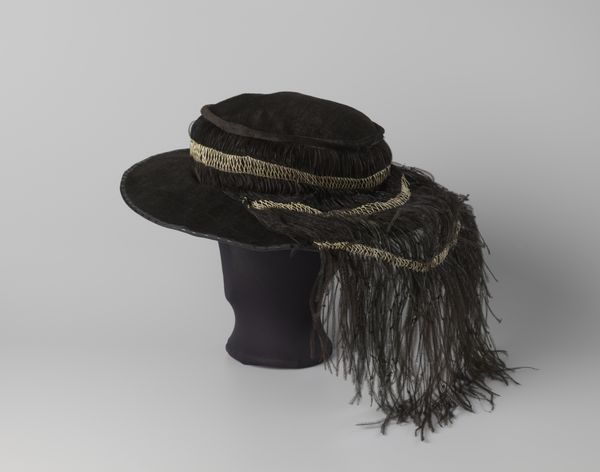
textile, photography
#
textile
#
photography
Dimensions: width 35 cm, height 30 cm, depth 29.5 cm, circumference 60 cm, height 25 cm
Copyright: Rijks Museum: Open Domain
Curator: Here we have some woollen caps, probably dating from 1650 to 1800, that were worn by Dutch whalers. Editor: The immediate impression is one of austerity, isn’t it? The muted brown of the wool, the simple, almost ecclesiastical form. It speaks of function over ostentation. Curator: Indeed. These caps represent more than mere headwear; they're emblems of the brutal whaling industry and the lives of those who risked everything for it. Think about the socio-economic context – these caps signify a working-class identity, a world far removed from the Dutch Golden Age depicted in portraits of the wealthy elite. Editor: Absolutely, and considering its construction, there’s a geometric clarity here. Note how the cylindrical form rises to meet the rounded crown, a smooth, almost seamless transition. The brim, such as it is, flares modestly. It directs the eye in a fluid curve, a stark counterpoint to the harsh realities of whaling. Curator: And we can interpret the materials themselves. Wool symbolizes warmth and protection, vital for men enduring harsh Arctic conditions. But the color... this drab brown perhaps reveals a lack of resources or even a deliberate choice to blend with the bleak environment. This resonates deeply with critical race theory as the colour connects to broader issues of social identity and marginalization. Editor: True. The material's texture also evokes tactile qualities – the rough feel of the wool against the skin, the potential for it to be coarse or softened by wear. This introduces a strong physical element to what appears at first to be just an everyday item. The tiny little stem or flourish on top is so peculiar, so out of step. Curator: It’s easy to forget the indigenous populations affected by the whaling industry too, peoples who possessed sophisticated knowledge of the seas long before European whalers arrived. These caps serve as uncomfortable reminders of a colonial legacy. Editor: Thinking about that semiotic complexity really unlocks the potential here. Seeing these caps has been much more insightful than I expected! Curator: Agreed, contemplating how these items encapsulate themes of labor, colonialism and survival creates much richer understanding than initially imagined.
Comments
rijksmuseum about 2 years ago
⋮
In 1980 archaeologists investigated the graves of 185 Dutchmen – whale hunters and workmen of the train oil refineries – who had died on or near Spitsbergen during the 17th century. The skeletons were still wearing their knitted woollen caps. Each cap was individualized; the men recognized one another only by the pattern of stripes on the caps. The men were bundled up so tightly against the fierce cold that only their eyes were visible.
Join the conversation
Join millions of artists and users on Artera today and experience the ultimate creative platform.
